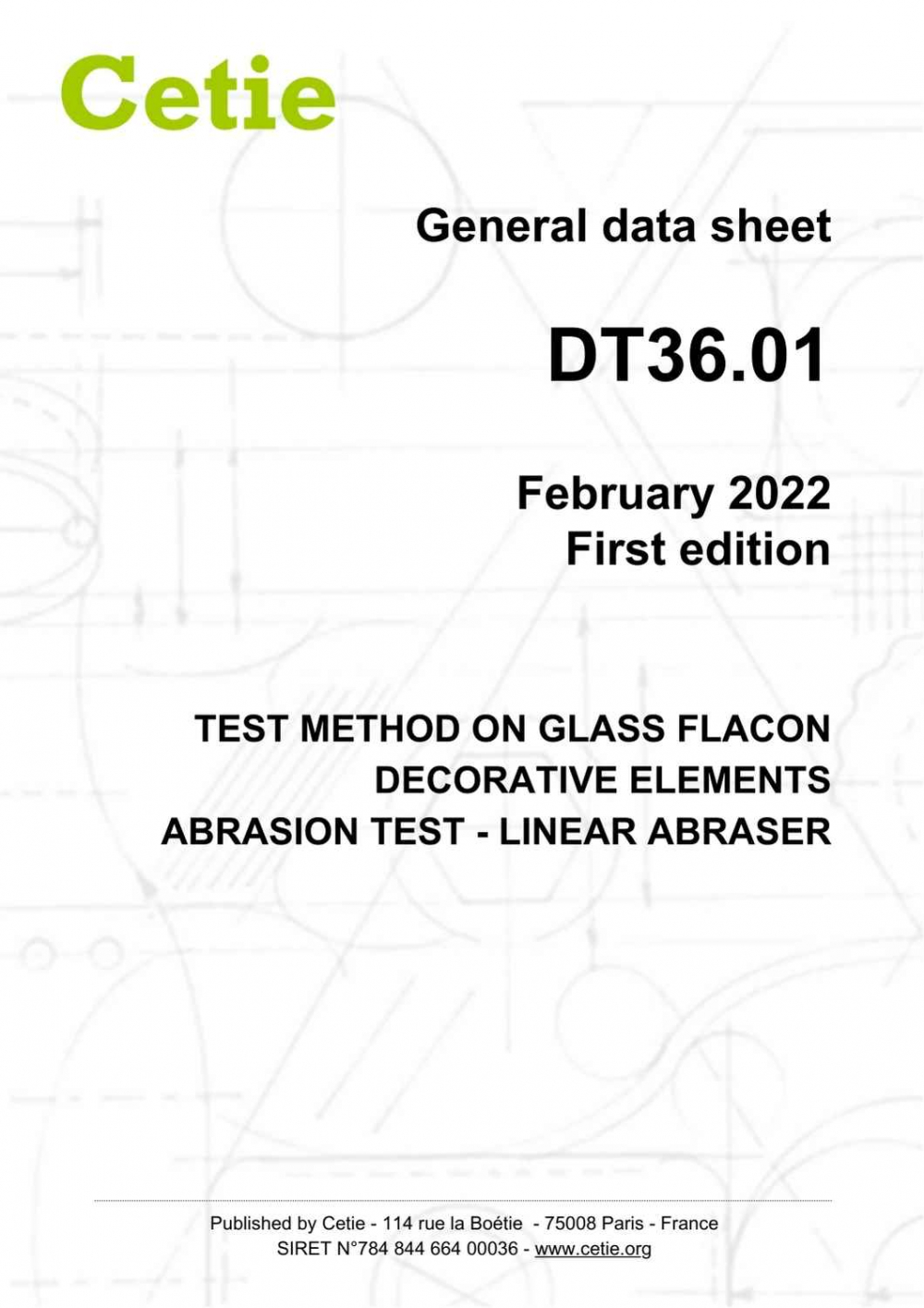DT36.01
First edition
Published on: 25/02/2022
Test method on glass flacon decorative elements - Abrasion test - Linear abraser
Scope of application
The abrasion resistance test is used to determine the level of degradation of a decorative glass flacon against the friction of a rough material.
It should be mentioned that other abrasion tests exist, such as the sand test, the corrugated cardboard test, or the 3D blender test.
It should be mentioned that other abrasion tests exist, such as the sand test, the corrugated cardboard test, or the 3D blender test.
Table of contents
1. Scope
2. Operating principle
2.1. Principle
2.2. Caution
2.3. Materiel
2.4. Sampling
2.5. Selection of the areas to test
2.6. Preparation of the eraser
2.7. Parameters
2.8. Testing procedure
2. Operating principle
2.1. Principle
2.2. Caution
2.3. Materiel
2.4. Sampling
2.5. Selection of the areas to test
2.6. Preparation of the eraser
2.7. Parameters
2.8. Testing procedure
3. Interpretation of the results
4. Related documents
4.1. Standards
5. Data sheet history
4. Related documents
4.1. Standards
5. Data sheet history
History
First edition: 02/2022
Experimental removed: 06/2023
First edition: 02/2022
Experimental removed: 06/2023
Contributors
BORMIOLI LUIGI, BUNDESVERBAND GLASINDUSTRIE, CHANEL PARFUMS BEAUTÉ, COTY FRANCE S.A. (PARIS), ESTEE LAUDER COMPANIES, GERRESHEIMER BELGIUM, GERRESHEIMER GERMANY, GUERLAIN, HEINZ GLAS, JACOMO PRODUCTION, L'OREAL, ORIFLAMME, PARFUMS CHRISTIAN DIOR, POCHET DU COURVAL, SAVERGLASS, SGD PHARMA, SHISEIDO INTERNATIONAL, STAZIONE SPERIMENTALE DEL VETRO, STOELZLE MASNIERES PARFUMERIE, STOELZLE-OBERGLAS, VERESCENCE FRANCE, WEILBURGER
Document under responsibility of working group:
Flaconnage decoration
WG chair: Lionel NIZAN - VERESCENCE FRANCE (MERS LES BAINS)
This joint group aims to produce dedicated documentation on test methods related to decorative elements on glass flacons, primarily for the cosmetics and perfume sectors.
